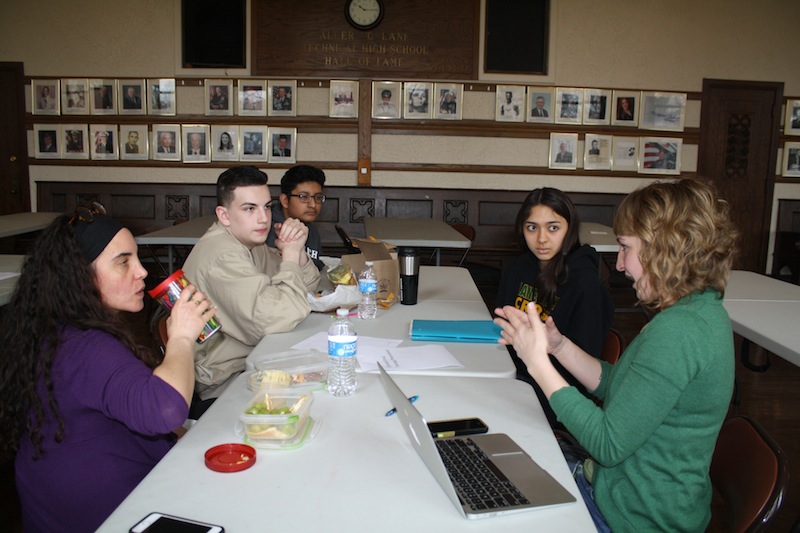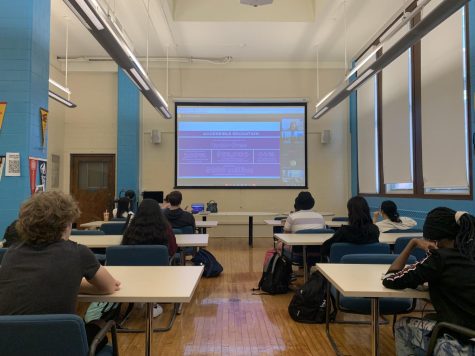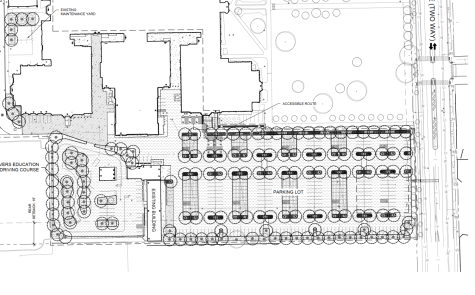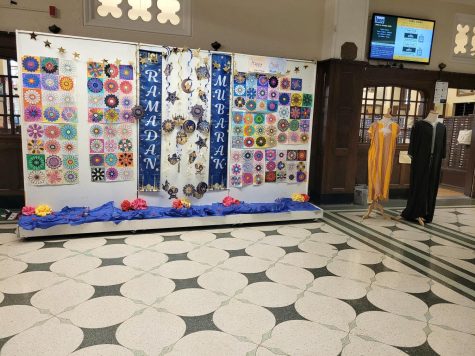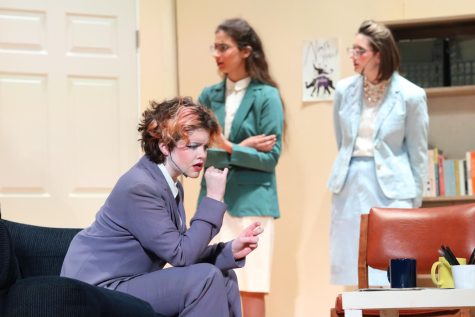Student Relations Committee inspires discussion on Lane issues
Students discuss outside groups and training programs to educate people on diversity within the community with Ms. Lee, a biology teacher.
April 6, 2017
Whether they’ve seen it, experienced it, or heard it, students have been approaching Assistant Principal Ms. Hanly with problems that have been going on in the building.
“We had a couple of students who came to see us [administration], and were kind of telling us about some general things they had heard in their classes, in the hallways; racist statements, sexist statements,” Hanly said.
The school and administration has responded by implementing hashtag campaigns and post-it notes around the halls.
“We were told by the kids that things like #LaneAccepts are stupid, you know, that some of the things we tried putting in place aren’t working, all-school assemblies are not working,” Hanly said. “So I’m like, the ideas I am coming up with aren’t working then you [students] have to help me out and tell me what will work.”
The administration is planning to attack the sexism and racism in the building with the help of a Student Relations Committee, which is run by students and facilitated by teachers.
“It’s the committee’s job to make students feel accepted at school and to tackle issues with ignorance and miseducation,” committee member Cara Fitzgerald, Div. 855, said.
The idea of the committee arose around the time Lane received a lot of media attention over what Hanly called “cultural problems within the building.”
Ms. Hanly did not just want to start a discussion about the racism and sexism only amongst student council members. They wanted to invite everyone to partake in finding a solution.
“We didn’t know how many applications we were going to get, but we ended up getting 106 responses,” Hanly said. “We figured that if students took the time to fill out the form, then we were going to allow them to be on the committee.”
The Student Relations Committee, which had its first meeting Feb. 24 and had another on March 1, has been making lists of problems and solutions. What seemed to come up often was that students have been desensitizing and normalizing hurtful words.
“People treat others like this because they think it’s OK, it’s normal,” Davida Mangiullo, Div. 151, said. “And they aren’t wrong; acting terrible to other people today is much more common. In LTAC, it’s extremely common because we see high schoolers doing it all the time.”
A problem that was often discussed was that students were saying what they wanted without realizing the impact it had on others.
“What we want to accomplish is to have people stop making comments that are hurtful and to be better educated in that what they say is offensive,” Hanly said.
The committee talked about the best way to teach and help students understand how to communicate and use language in a way that does not hurt others, while at the same time not treating anyone as a child but more like an adult.
“If we bring in speakers who know the background of these words and why they are so harmful then kids may be like, ‘Oh I have never even thought of that,’” Hanly said.
Mustiqirr Muhammad, Div. 870, brought up the idea of creating a space where students can create art as a form of expression, which he felt may work in educating students on each other’s backgrounds. This gave rise to other ideas from the committee, like a slam poetry event and other creative outlets.
“I think that once people understand each other and where they come from, then that will give more of a communication vibe and more understanding between cultures, which will inherently bring everyone together,” Muhammad said.
The committee has discussed other ideas, which Ms. Hanly and teacher facilitators have been looking into, including reforming division and the counseling program.
Making division a place where students can have real conversations about what is going on at Lane and making counselors easier to approach when students have a problem, were just some of the ideas suggested.
The administration will ultimately have the final say, but the students have the power to bring problems to their attention.
“We could create a positive environment in advisory to speak out your ideas, and a representative could relay them to the committee,” freshmen Malin Hensel said.
One challenge the committee faces is that some kids say hurtful things because of how they were raised, or their inability to “look beyond their cultural boundaries,” as Fitzgerald said.
“I can’t stop you [students] from going home and getting educated in a whole different way that undoes everything we are trying to do,” Hanly said.
While changing the climate of Lane will be a difficult process, students love the idea of getting their voice in the matter.
“The school has been built on teachers rule, and I feel like it’s finally time for students to be able to have a voice and to be able to feel like they changed something or someone,” Marilyn Ortega, Student Council President, Div. 857, said.
The committee believes that to make a change; the student body needs to know the Student Relations Committee exists. Hoping that once the student body knows, the communication flow will increase.
“We have the time to talk to them, and we connect with them because of the age group, so it’s important they know they have students they can talk to, to tell the administration what we need and want,” Nathaniel Segura, Div. 963, said.
Though Hanly recognized that having these conversations about sexism, racism, and cultural problems will be hard, but without these conversations, the problems will go unsolved.
“If we are going to fix it, we need to know how, ” Hanly said.
However, change won’t happen overnight. Hanly recognizes the fact that this year the Student Relation Committee may just be laying the groundwork on what’s to come in the following years.
“It’s important to know that people are trying to make this school better,” Manguillo said. “That there is still hope.”

